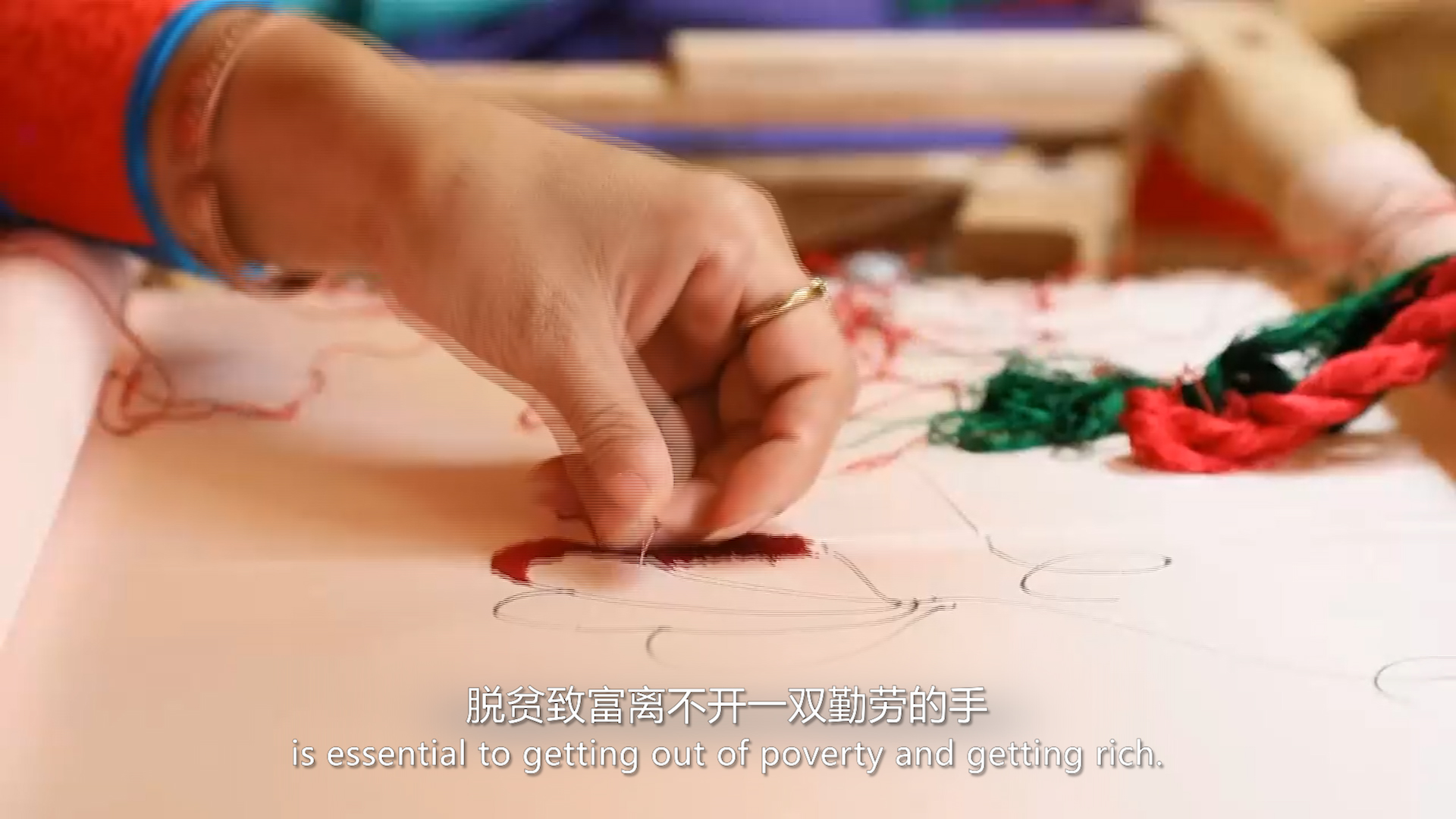【“獻禮二十大”· 鄉村振興這五年】文化振興:夯實鄉村振興精神基礎 文化來“鋪路”

“巫山民歌何其多,我的歌兒用船拖”。回蕩在群山間的歌聲,表達了重慶巫山縣竹賢鄉下莊村人對生活的美好期盼。
"So many folk songs are there in Wushan, I can sing so many songs that could fill the length of a ship." The song that echoes through the mountains expresses the wonderful life expectations of the people of Xiazhuang Village in Zhuxian Township, Wushan County, Chongqing.

巫山縣的名字裏有一個“山”字,確實巫山以山聞名。七年來,在村黨支部書記毛相林的帶領下,村民們在絕壁上鑿出了一條長達8公里的“致富路”,實現小康生活。今天的中國,已進入全面建成小康社會後的新發展階段,想要實現“到2035年,全體人民共同富裕取得更為明顯的實質性進展” 的目標,堅持物質富裕和精神富裕相統一是必然要求。
Wushan County has the word "mountain" in its name, and indeed Wushan is famous for its mountains. Over the past seven years, under the leadership of Mao Xianglin, secretary of the village party branch, the villagers have carved out an 8-kilometre-long "Road to Prosperity" on the precipice to achieve a well-off life. Today, China has entered a new stage of development after the completion of a moderately prosperous society. If we want to achieve the goal of "achieving more obvious and substantial progress in the common prosperity of all the people by 2035", it is inevitable to insist on the unity of material and spiritual prosperity.
生活好起來的下莊村,如今還辦起了熱鬧的“村晚”,將民俗文藝演出與直播帶貨相結合,既能傳播鄉村文化藝術,又能展現鄉村的新面貌新生活。
The village of Xiazhuang, where life has improved, now also hosts a lively "village gala", combining folklore performances with live-streaming, which both spreads rural culture and art and shows the new face and life of the village.

脫貧致富離不開一雙勤勞的手。在內蒙古自治區興安盟科右中旗草原上,農牧民婦女正借助非遺技藝這雙“翅膀”讓民族手工藝得到振興。
A pair of hard-working hands is essential to getting out of poverty and getting rich. In the grasslands of the Keyouzhong Banner of the Xing'an League in the Inner Mongolia Autonomous Region, herdswomen are revitalizing their ethnic crafts with the help of the non-heritage skills.
“這是我的家,希望家鄉一天比一天美好,希望這種傳統文化能被更多人了解,也希望家鄉的父老因這悠久的文化而變得更加自信。”“全國脫貧攻堅楷模”白晶瑩帶領蒙古族婦女居家就業,巧手致富,通過積極實踐,將草原文化借助非遺技藝傳播出去,從而又彰顯了人民的“文化自信”。
"This is my home, and I hope that my hometown will become better and better every day, that this traditional culture will be better understood by more people, and my countryman will become more confident because of this long-standing culture." Bai Jingying, a national model in the fight against poverty, has led Mongolian women to work at home and become rich with their hands, and has actively practised spreading the culture of the grasslands through her non-heritage skills, thus demonstrating the "cultural confidence" of the people.

“紅色文化”蘊含著激蕩的革命精神和厚重的歷史內涵。安徽省金寨縣,地處大別山腹地,是紅軍的搖籃、將軍的故鄉,紅色資源積澱深厚,也是中國著名綠茶“六安瓜片”的黃金産區。幾年來,金寨大灣村探索出一條“紅綠結合、茶旅融合”的發展道路。“山上種茶,家中迎客”,村民的日子很快紅火了起來。
"The Culture in Red" contains a spirit and connotations, which arose from the stirring revolution and a long and heavy history. Jinzhai County in Anhui Province, located in the hinterland of the Dabie Mountains, is the cradle of the Red Army, the hometown of the generals, with a profound accumulation of red culture resources, and is also the prime production area of China's famous green tea "Lu An Guapian". Over the past few years, Dawan Villageof Jinzhai County has explored a way to development - combine red cultural resources with green tea resources. " Growing tea on the mountain, welcoming guests at home", the villagers soon became prosperous.

鄉村文化振興是特色社會主義文化振興的重要組成部分,是鄉村振興戰略實施的重要內容。這三個生動的鄉村故事説明,鄉村文化振興可以通過結合當地特有資源與人民大眾的智慧來實現。農民們通過鄉村文化振興,追求幸福生活,豐富文化生活,從而進一步增強文化自信。
The vitalization of rural culture is an important part of the vitalization of distinctive socialist culture and an important element in the implementation of the rural vitalization strategy. These three vivid rural stories illustrate that rural cultural vitalization can be achieved by combining unique local resources with the wisdom of the people at large. Through rural cultural vitalization, farmers pursue a happy life and enrich their cultural life, thus further enhancing their cultural confidence.









